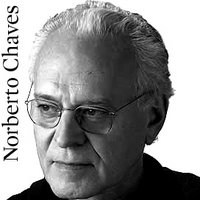
One of the great dilemmas that so far can be observed is the ambiguity differentiation resulting in the applied arts of design as a communication technique. This class proposes a reading of Argentine designer Norberto Chaves, who mentioned the lack of theoretical activity in the field of design.
Some points of conflict in practice and design review are:
- Inprecisión of functions in the communications market. Uneven Development
- graphic design services and the difficulty for approval.
- formal deviation in the ranking of levels of program design. Pragmatism or trend
- the answer is not measured by conceptual processing.
- Lack of theoretical development. Failure
- curricular teaching profession.
Listed below are some of the deficiencies more common in graphic design services:
- resistance to the constraints of the program.
- The dimensionality of the speech.
- , the context of the piece.
- The low abstraction. Non-discrimination
- functions.
- Non objectification of graphical languages.
- passive reproduction of style. Poverty
- style.
- designer identification with the work. Empiricism and deficit
- discipline.
The designer is a global communicator must have control of what you need to communicate. Importantly, not an artist so the style is still a variable, ie does not respond to personal creative needs.
The designer must be more dominant demand also must follow a process, a methodology that supports your work as it is difficult to educate the customer to make him understand that our object of study is a knowledge product and intangible. It is at this time when we are in a struggle between the needs of customers vs. comuncación customer needs. It is necessary to educate and help it grow.
addition to what has been said, the designer must be highly analytical mind and an awareness of working in an interdisciplinary way. Many designers end up work alone without seeing the context in which this unfolding trying to solve the problem. Even the cultural influence of the utmost importance that they put aside and try to cover by tropicalisation products. Culture is encompassing, the design must take this into account.
Why art design is not applied?
The design is sometimes confused with the art, however, the latter has no prospective design process, but of craft production. In practice, the design is affirmed and institutionalized as disciples independently associated with the production and responding synthetically all his requirements: technical, utilitarian, symbolic and aesthetic, commercial, industrial, and promotional comuniacionales.
This was one of the main discussions of this kind, "the design is art? Yes or no?.
One of my colleagues argued that the turn has been given to the art is more personal expression, however, take into account that this is a very recent concept. We also saw that can be considered a necessity of aesthetic pleasure, precisely because the way we approach things is aesthetic taste is a fundamental part, goes with the feel and response of acceptance or rejection of the around us. Multiple
do graphic design professions, whether sketches, illustrations, visual codes, diagrams, etc. Many times our product and our process are also graphic visual depictions.
Finally, personal style as a fundamental part of the design was one of the discussions. Personally I do not think the style is the source of the design. Certainly there are companies that look specifically for the style of a designer, looking to sell that image, but this does not mean that style is going to ensure functionality. In short, to quote the words of my friend Veronica in the previous class, "aesthetics serves to function. "
